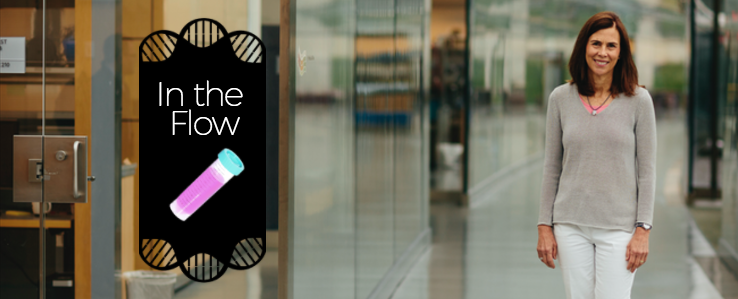
Jennifer Lippincott-Schwartz’s lab group meets on Monday mornings. A dozen or so team members watch slides click by, laptops and coffee mugs warming the conference room’s large table. Lippincott-Schwartz, a cell biologist, sits a couple of seats down from the projector screen.
Across from her, postdoctoral researcher Heejun Choi is explaining his latest work tracking protein-building ribosomes as they move through the tubes of the endoplasmic reticulum (ER), which stretches from the nucleus to the outer membrane of cells. Just last fall Lippincott-Schwartz’s lab upended the conventional wisdom about how that organelle is structured, revealing a system of densely packed tubes instead of the maze of membrane sheets that has appeared in textbook diagrams for decades.
Now the group is building on that finding. Lippincott-Schwartz has made a habit of aggressively pursuing new directions. “She’s fearless in terms of going forward and trying things,” says Carolyn Ott, a senior scientist in the lab, who has been with her for 12 years.
![]()
Lippincott-Schwartz has spent her career making fundamental discoveries about organelles. The basic cellular functions they perform are key to yielding secrets about cancer, neurodegenerative diseases like Parkinson’s and Alzheimer’s, viral infections that cause developmental disorders, the fate of stem cells, and even how long we live. And to ask these questions, she’s often had to invent whole new technologies.
Choi thinks that other researchers have overlooked the effects he’s seeing, with ribosomes seeming to cluster at the junctions of tubes in the ER. Lippincott-Schwartz, who moved her lab from the National Institutes of Health to HHMI’s Janelia Research Campus in March 2016, pops out of her chair to explain a concept to the rest of the group. Other members pipe up with questions and suggestions for Choi. One idea gets her attention, and Lippincott-Schwartz is jotting rapid notes, her brow furrowed in concentration.
Choi wants to analyze the data he’s already collected, but Lippincott-Schwartz is firm. She tells him he needs to go back and get more data first, better data, using a different kind of microscope. Other members give specific advice about using that instrument. The entire discussion is additive and organic. The researchers pick up their laptops and coffee, leaving the conference room with energy and a sense of purpose.

